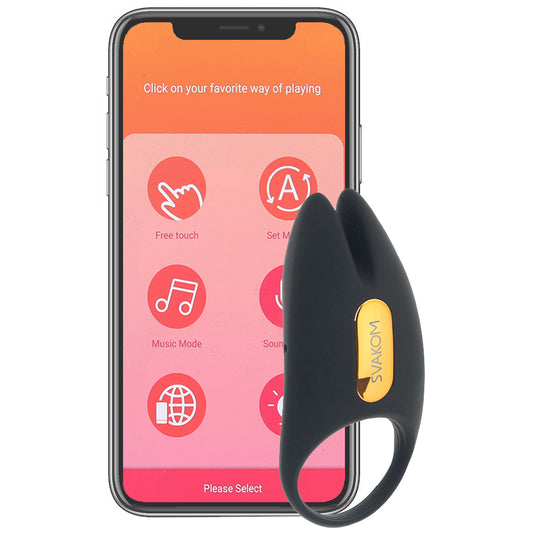
With so many topics relating to polyamory, where do you even start?
Probably with the basics, like the definition and kinds of polyamory.
But don’t worry! We’ve covered the juicier stuff too, like misconceptions and some suggestions. We’ve got all the details to answer your questions in case you’ve ever been curious to know what a polyamorous relationship is all about.
You can grab your favorite cup of tea, but we’re here to quash all the rumors.
What is a Polyamorous Relationship?
Just like Forrest Gump’s mom said, “Life is like a box of chocolates.”
This can sort of apply to polyamory because there are so many ways you can practice it. We’ll get to all the variations in a second. (I’m so excited, I just want to jump ahead.)
Still, just a fair warning before we proceed: because there are so many ways to celebrate and become a polyamorist, you need to know that you can always say no – no to additional partners, no to expected obligations to one of your partners, etc.
The way you poly is up to you and your partners.
The basic definition of a polyamorous relationship is one in which there are more than two partners.
It’s a way to be non-monogamous with your partner’s (or partners’) consent. In most (but not all) poly relationships, there is a “primary”, if you will, partner with additional “secondary” and on partners who get less of your consideration as you make your way down the lineup.
We’re starting to get into the different types of polyamorous relationships, so let’s move on.
6 Different Types of Polyamorous Relationships (and Other Terms You Might Want to Know)
1. Hierarchical Poly
This is what I was describing above where there is a primary partner, a secondary partner, and so on.
Each person in the relationship falls somewhere in the hierarchy and receives time and attention mostly according to this pecking order.
Spouses/Girlfriends or Boyfriends
Within the hierarchical standards you can have a married couple who shares finances and/or children.
The secondary and so on partners may then be given the moniker of boyfriend or girlfriend that come with less responsibilities outside of the dating and sexual aspects.
Note: a woman can be married to a man or a woman and have a boyfriend or a girlfriend, or a man can be married to a woman and have a boyfriend or a girlfriend, etc. - gender roles don’t matter.
Nesting
The hierarchical setup doesn’t require that anyone live together, but nesting is the term for a partner who does live with you.
This term can apply to any role in the relationship, whether primary, secondary, etc.
2. Non-Hierarchical Poly
Pretty much the opposite of hierarchical poly. Nobody is above anyone else at any time. You split your time and emotions as equally as possible between your partners.
Everyone gets what they need and has a say in how things go.
Two terms you might not know:
- Metamour: the partner of your partner whom you are not a partner of.
- Compersion: a feeling of happiness that comes from seeing others happy. Basically, the reverse of jealousy.
3. Kitchen Table Poly
A form of polyamory where everyone can come together the same way as a traditional family unit. There’s no arguing, and non-sexual activities can take place with the participation of all.
But don’t confuse this with polygamy, which is where one person has multiple spouses (think Sister Wives).
Two terms you might not know:
- Triad: a relationship between three people. They might all be sexually active and emotionally reciprocal of each other (like the points of a triangle), or one person may have two partners who do not have a relationship (like a door hinge).
- Quad: ditto a triad, only with four.
4. Parallel Poly
Sort of the opposite of kitchen table poly.
All the partners know who each other is and consents to their partners’ involvements within the relationships, but they don’t meet up for coffee or go on dates all together.
Don’t confuse this with an open relationship where partners don’t necessarily know who each other is and aren’t necessarily committed to more than one partner.
5. Mono-poly
No, not the board game! This is a mashup of polyamorous and monogamous relationships where one partner is poly and the other isn’t.
This is still not an open relationship – the partners all know who each other are and may or may not get together for non-sexual meetups.
The person choosing to be monogamous is completely okay with their partner having multiple commitments.
6. Solo-poly
This one sounds a little complicated, but just hear me out.
If you are a person who is putting yourself and your own needs above the emotional and sexual needs of your partners, you probably fall into this category.
You don’t have a primary or even really a secondary partner. It’s kind of like having a friends with benefits relationship without the friendship needed and with several people at once. It’s like being single and in several committed relationships at the same time.
It’s really complicated to explain a person who wants a non-complicated polyamorous relationship, but I hope my explanation did the trick.
3 Non-Monogamous Misconceptions
There’s a lot of misinformation floating around out there. Let’s change that, shall we!
1. It’s just cheating...
For starters, polyamorous relationships aren’t an excuse for spousal cheating.
While you can cheat on your consensual coupling by seeking sex outside of your relationships, having more than one dedicated partner is not considered cheating. While we’re here, there’s also a difference between open relationships and polyamory.
An open relationship means the main coupling approves of one or both partners having sex outside of the relationship, but there are no secondary partnerships with commitments.
2. Polyamorous people have STIs...
Okay let’s talk safe sex for a minute! Polyamorous people aren’t packed full of STIs.
While any person can contract an STI, those in polyamorous relationships find themselves to be discussing the topic quite a bit.
They usually practice safe sex and routine STI testing. This actually makes them less likely to catch an STI than those in other kinds of relationships. “Fluid bonding” occurs with you’re not using a condom during sex.
Sometimes the primary partners in a poly relationship will fluid bond with each other but not their secondary and consecutive partners.
Speaking of safe sex, did you know that PinkCherry has a ton of different condoms?! And they’re even more unique than the ones you’ll find in your local grocer’s family planning aisle.
3. It’s just a phase...
Lastly, polyamory is a lifestyle, not a phase.
Those who wish to have multiple partners aren’t going through a small stage in their life where they’ll change their mind in just a few weeks or months. Many married couples choose to be in a polyamorous relationship.
In fact, many have children with several different partners within the group and stay together for many years or even for life.
How to Make a Polyamorous Relationship Work for You
We’ve got a few helpful tips as your takeaway from this article. Remember, these are just suggestions. You do you, boo!
Communication and consent. These two words are not one in the same, but they go hand in hand. You can’t be in a polyamorous relationship if any of your partners believes they are your “one and only”.
So, talk to your partner(s) before bringing in someone new to your relationship.
It’s important to be understanding and flexible in a polyamorous relationship.
With multiple people’s schedules to consider, you need to make sure you’re thinking of everyone.
Being selfish and thinking only of your own needs isn’t going to fly unless your partners are aware and accepting that you are more solo-minded.
Depending on the kind of relationship you’re in, you’ll want to make sure you have everyone’s needs covered.
Not to get into the gender identity topics too much, but you need to have items in your sex kit that will please everyone regardless of whether they have a penis or clitoris begging for your stimulation.
Trust PinkCherry to help you out with countless items to please every inch of anyone’s body!






